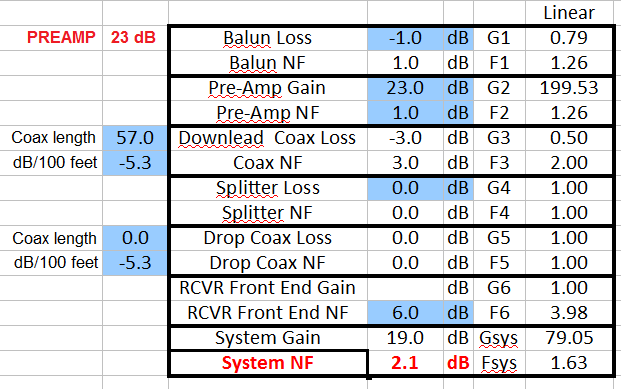Quote:
|
All other things being equal (i.e. transmitter power), does a move down the band (i.e. WFFF going from Ch43 to Ch16) bode well for deep-fringe reception areas like my house?
|
I would say yes, if the antenna for Ch16 has at least as much gain as the antenna used for Ch43. I base this on the fact that VHF signals are more frequently used in mountainous areas because they can make it over terrain obstructions more easily. This would seem to apply to UHF low end vs UHF high end signals as well, to a lesser extent.
To summarize, these are the factors to consider when hunting for weak marginal signals:
1. Select an antenna that has the highest gain available for your most desired channel. In your case, it would probably be the AD DB8E after the move to Ch16:

2. Mount the antenna in the best hot spot you can find on your property. That might not be where you want it for the sake of appearance. Often, a single antenna up higher will out perform a stacked pair and will be easier to mount.
3. Keep the coax between the antenna and the preamp input short; every 16 feet of coax is like a 1 dB loss of antenna gain for UHF.
4. Consider switching to a low Noise Figure preamp like the KT-200. They can make the reception of weak signals easier, but are more sensitive to static damage; that's the trade-off.

This is the way it works:
The antenna gain must make the signal strong enough to exceed the Noise Figure of the preamp plus the 15 dB minimum required SNR for the signal. Once the signal reaches that point, the preamp will amplify the signal to overcome the distribution losses. The preamp will also amplify the Thermal Noise Floor which will bury the tuner Noise Figure, making it irrelevant.
The metric for the antenna system performance is called the System Noise Figure; the lower the number, the better. It is primarily determined by the preamp at the beginning of the chain. The System Noise Figure can be calculated using the Friis Noise formula.
https://en.wikipedia.org/wiki/Friis_formulas_for_noise
Quote:
|
An important consequence of this formula is that the overall noise figure of a radio receiver is primarily established by the noise figure of its first amplifying stage. Subsequent stages have a diminishing effect on signal-to-noise ratio. For this reason, the first stage amplifier in a receiver is often called the low-noise amplifier (LNA).
|
System Noise Figure calculations for the above Noise Margin diagram:

reducing the balun loss and the preamp NF:
